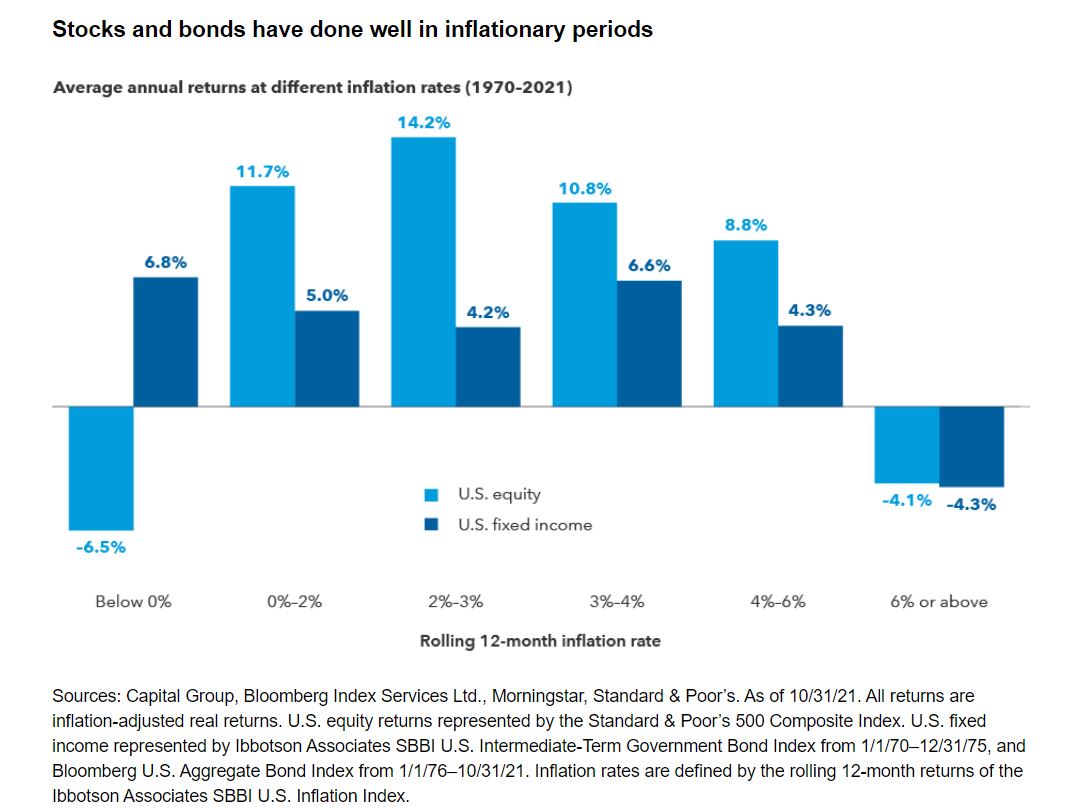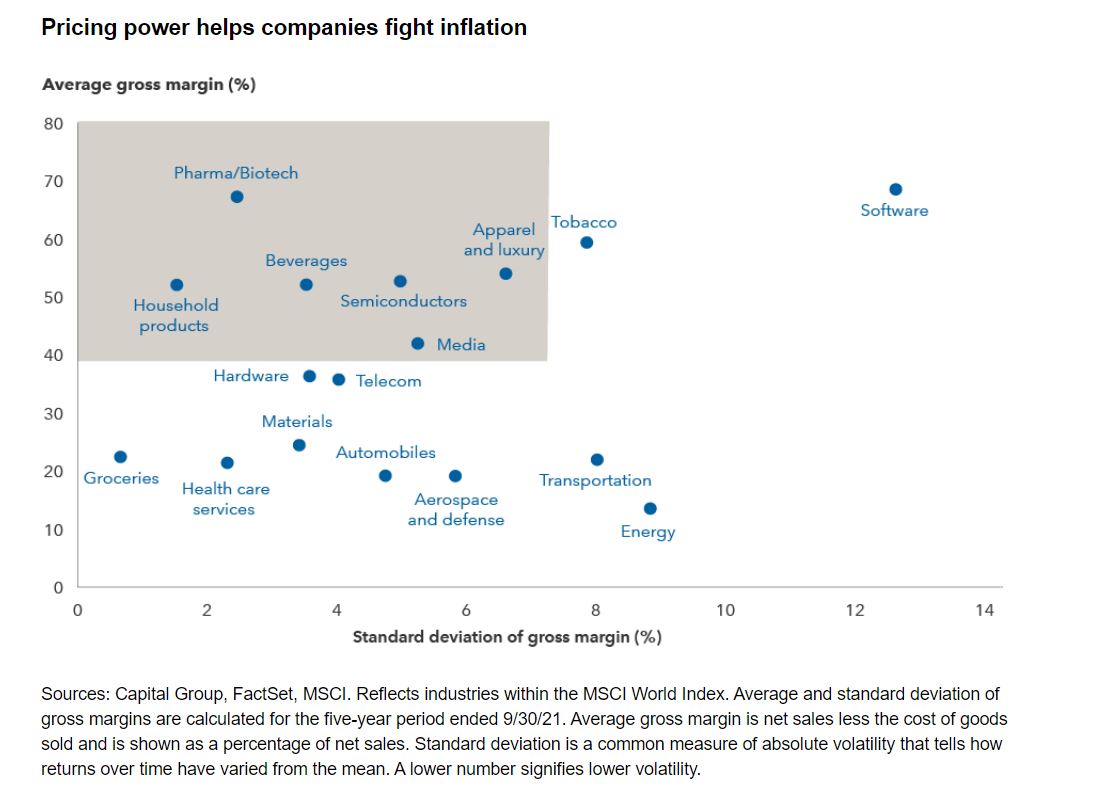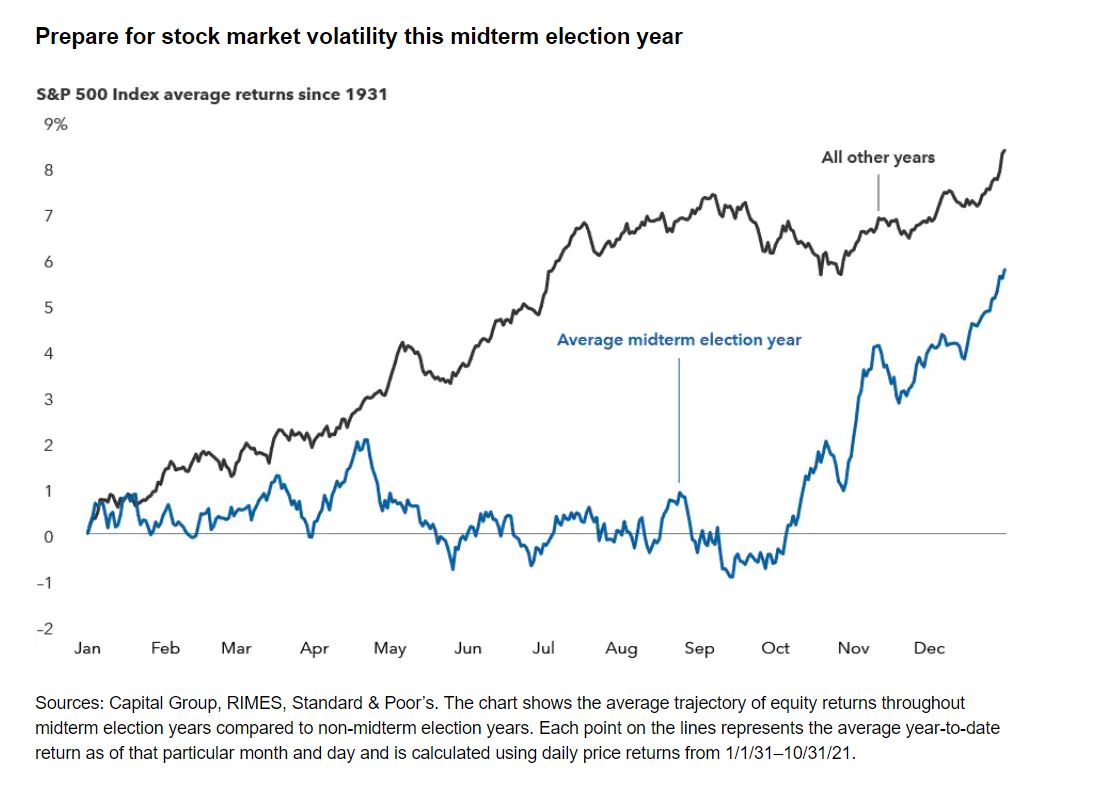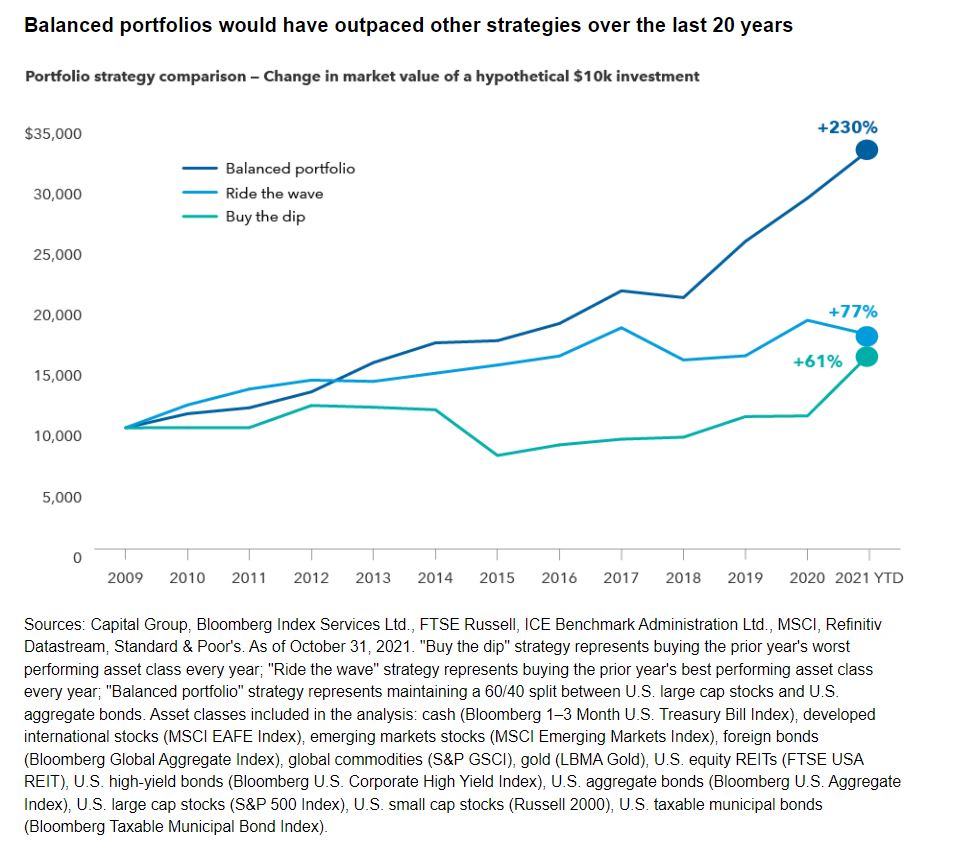
Market Perspectives. From Vanguard
Market Perspectives.
Vanguard’s monthly economic and market update.







CRN202412-1456079

Market Perspectives.
Vanguard’s monthly economic and market update.







CRN202412-1456079


The American economy is healthy again and appears to be on a path toward solid growth in 2022, which should be encouraging news for U.S. financial markets.
Yet investors can be forgiven for feeling extremely uncertain about the year ahead, according to U.S. economist Darrell Spence.
“We’re far enough along with the pandemic that the economy is not in distress,” Spence says, “but COVID and the response to it created a number of distortions — in global supply chains, labor markets, sectors and even politics.”
He expects U.S. economic growth to be solid but slowing in 2022, in the range of 2.5% to 3.0%, as the economy contends with waning stimulus and inflationary headwinds. Although full economic shutdowns may be behind us, emerging COVID variants, including Omicron, and other surprises could further dampen growth.
“Things are returning to normal, but none of us has experienced this before. It’s important to acknowledge there are still things we don’t know,” Spence adds.
Perhaps the biggest questions on investors’ minds are about inflation. How high will it go and how long will it last?
Neither investors nor Federal Reserve officials have had to contend with meaningful inflation over the past three decades. That changed last summer.
“When stimulus-induced demand met COVID-restricted supply it created distortions in the economy,” Spence says. “And that fueled rapidly rising prices wherever there were bottlenecks.”
Fed officials have maintained that high inflation levels in the U.S. are transitory, and prices should retreat once these distortions are corrected. But Spence expects inflation levels will remain elevated throughout 2022.
“I’m not convinced that these shifts are fundamental changes to the productive capacity of the economy, so I expect inflation to moderate. But it may take longer than Fed officials expect for supply and demand to come back into balance.”

Investors worried about the destructive impact of inflation on their portfolios should consider this: Even during times of higher inflation, stocks and bonds have generally provided solid returns. It’s mostly at the extremes — when inflation is above 6% or negative — that financial assets have tended to struggle.
What’s more, some inflation can be healthy for companies, such as banks and commodity-linked companies that have struggled in a low inflation, low interest rate world.
Inflation is so unsettling because it can erode a company’s profits and, ultimately, investor returns.
To blunt its impact, investors may want to consider investing in companies with pricing power. Pricing power can help protect a company’s profit margins by passing rising costs along to customers.
“I’m not ready to believe we are headed into a period of sustained inflation,” says equity portfolio manager Diana Wagner. “But I do believe rising costs will linger in the months ahead, making it the biggest risk investors face in 2022. That’s why I am so focused on uncovering companies with pricing power.”
Take Netflix. A string of hits like “Squid Game” and seemingly insatiable viewer demand have enabled the streaming giant to raise subscription fees four times over the past 10 years.
High and stable margins can be an indication of pricing power. Companies with pricing power potential include consumer businesses with strong brand recognition, like beverage makers Keurig Dr Pepper and Coca-Cola; companies in industries with favorable supply and demand dynamics, like semiconductor and chip equipment makers TSMC (Taiwan Semiconductor Manufacturing Company) and ASML; and businesses that provide essential services, like health care giants Pfizer and UnitedHealth Group.

Consumer goods aren’t the only things that appear to be expensive. Thanks to low interest rates, accommodative central bank policy and the reopening of economies, most classes of stocks and bonds have gotten pricey.
U.S. equity markets have been generally strong in the post-pandemic period, thanks in part to robust corporate earnings. That said, price-to-earnings ratios, a measure of how expensive stocks are, have been elevated relative to historical averages.
That’s why careful security selection and diversification are more important than ever.
“We have seen a range of stocks — from fast-growing digital stocks to old economy stocks tied to the cyclical recovery — become more expensive over the past year,” says equity portfolio manager Chris Buchbinder.
“Given the level of uncertainty we face today, I am looking to strike a balance in my portfolios, seeking exposure to companies with long-term growth potential, like certain giants in e-commerce, streaming and digital payments; companies that can still participate in the cyclical recovery, like airplane engine manufacturers; and those with secular growth and cyclical components, like automaker General Motors — whose Cruise division is a leader in driverless car technology.”
One potential bright spot for investors in 2022 is the universe of dividend-paying stocks.
After record dividend cuts and suspensions during the pandemic, companies are reinstating dividend payments, and some with surplus capital are declaring catch-up dividends.
“Today I am finding no shortage of opportunities to invest in companies restoring and even increasing dividend payments,” Wagner says. “With profit margins recently near peak levels, companies are able to increase dividends despite inflationary pressures.”
Of course, not all dividend payers are created equal. Wagner is focusing not on the highest yielders, but on those companies with strong underlying earnings growth that have demonstrated a capacity and commitment to raise dividends over time. Consider, for example, semiconductor makers like Broadcom, which has increased its annual dividend in each of the last five years. Even during the pandemic, the company raised its dividend more than 11%, supported by record profitability. Such dividend growers historically have tended to generate greater returns than other dividend strategies, while also keeping up relatively well with the broader market.
Companies paying meaningful and growing dividends can be found across a range of sectors. Among these are health care services providers like UnitedHealth Group and telecommunications conglomerates like Comcast.
While it might feel like a lifetime away, investors may want to be mindful of the midterm elections in November. Historically, elections have little impact on the long-term direction of markets, but they tend to cause some volatility during election years.
“I don’t think this year will be any different,” Buchbinder says. “I don’t expect the result to be a huge driver of investment outcomes one way or the other. There may be a few bumps in the road, and investors should brace for short-term volatility throughout the year.”
Indeed, an analysis of more than 90 years of equity returns reveals that stocks tend to have lower average returns and higher volatility for the first several months of midterm election years. As results at the polls become more predictable, this trend often reverses, and markets have tended to return to their normal upward trajectory. But these are just averages, so investors shouldn’t try to time an entry point into the market.

With a laundry list of concerns including slower growth and rising inflation, many investors may be wondering if they should move some cash to the sidelines in 2022. Holding a lot of cash has typically been a drag on overall portfolio returns, and it may be especially impactful today since real returns from cash are negative.
Instead, investors should consider maintaining a well-diversified, balanced portfolio like the one in the chart below.
The chart illustrates a hypothetical scenario representing three types of investors. Each year, a momentum-driven investor buys the top returning asset class from the previous year. A value-seeking investor buys the lowest returning asset class. The third investor sticks to a 60/40 balance between diversified stock and bond portfolios and rebalances at year-end. In nearly every multi-year holding period over the last 20 years, the balanced portfolio outpaced the other two, often by a wide margin.

Within their equity portfolios, investors may want to include a mix of proven growth companies, stocks that have consistently increased dividends and companies that can maintain pricing power.
“With rising inflation and other uncertainties on the horizon, I’m optimistic that an active portfolio of select companies with strong pricing power can help investors thrive in the years ahead,” Wagner says.
CRN202211-1354899
Recent Comments